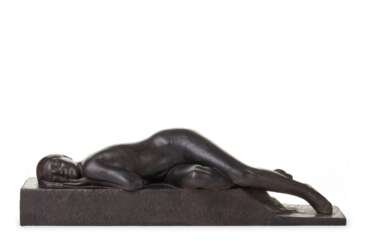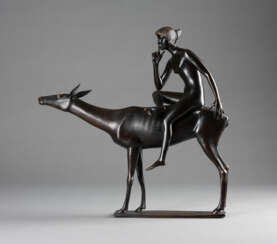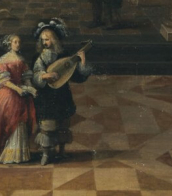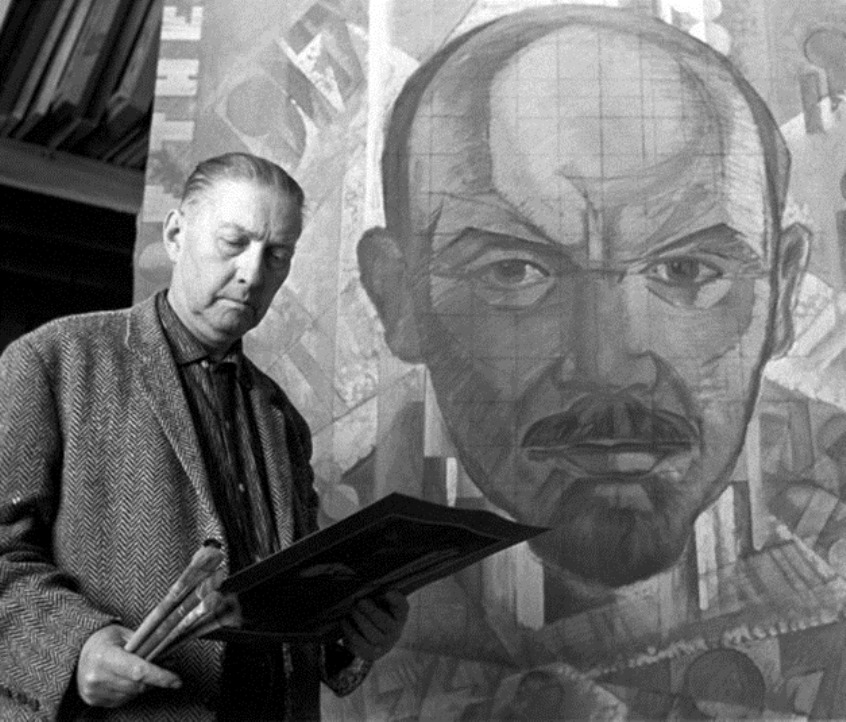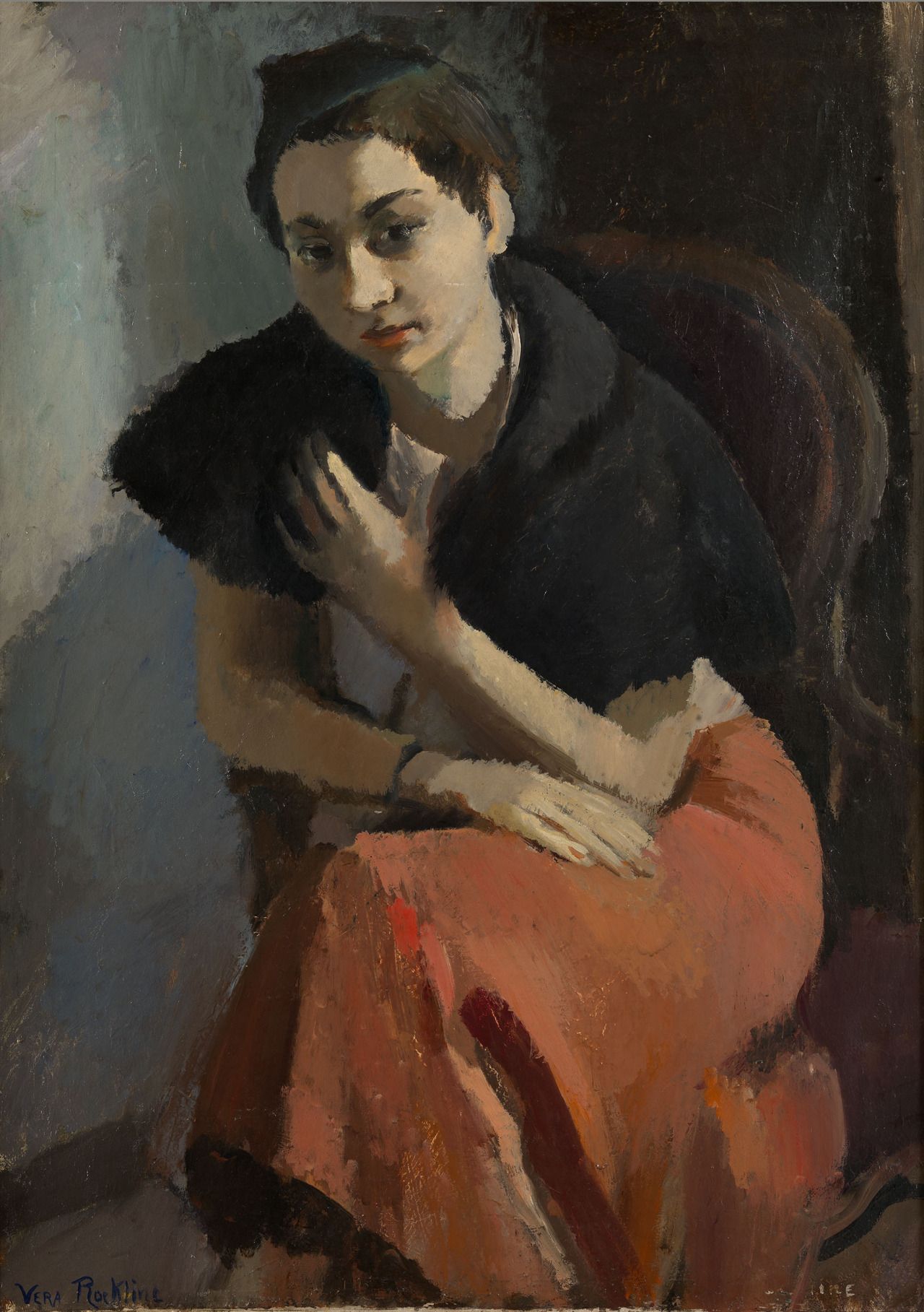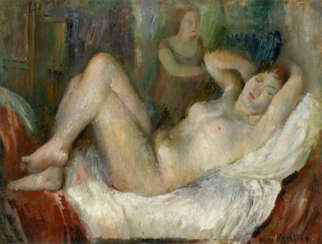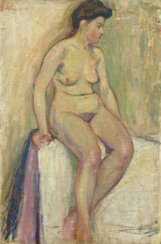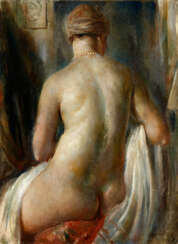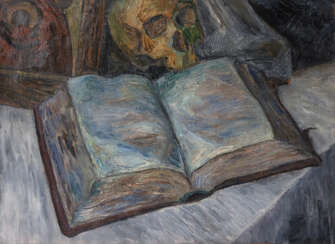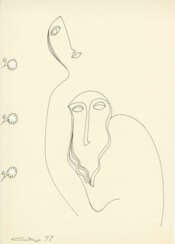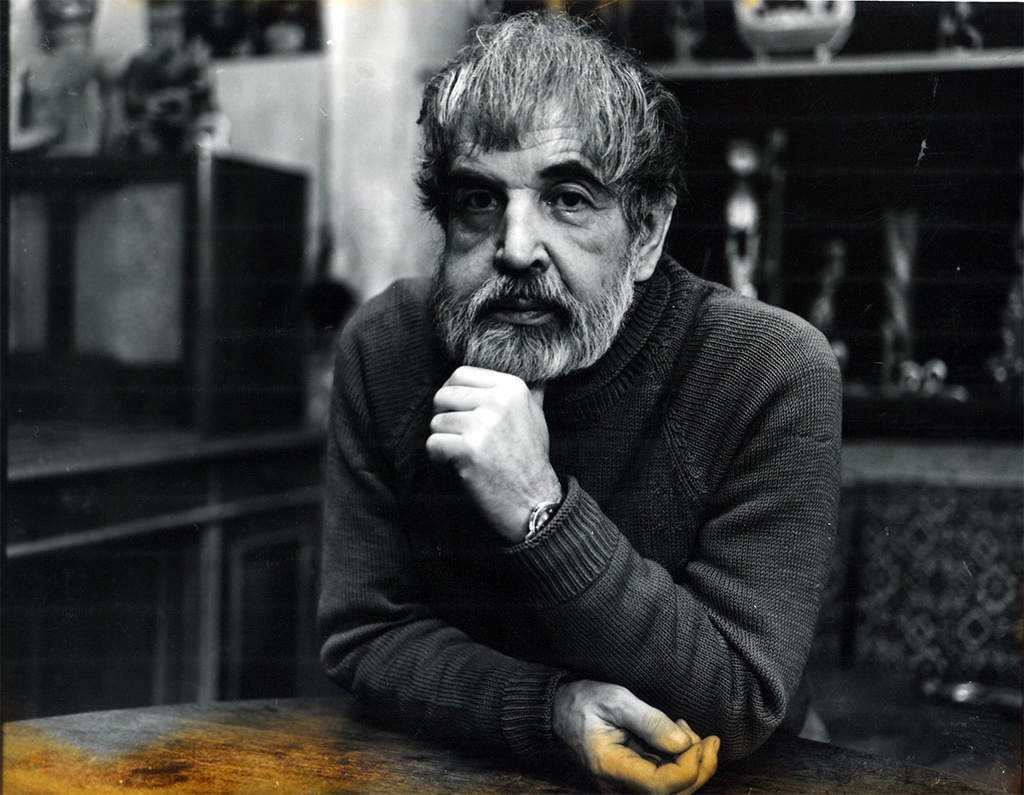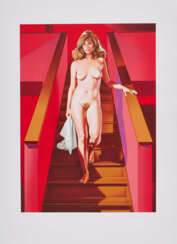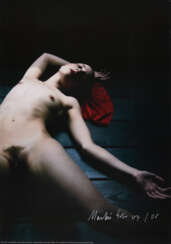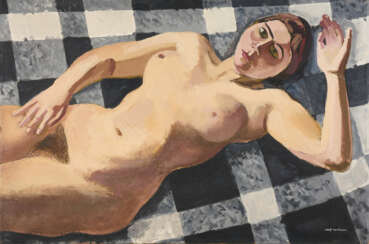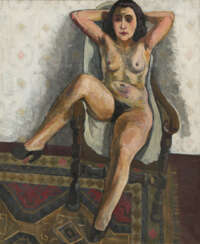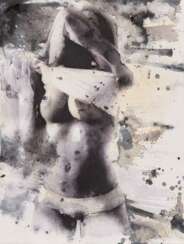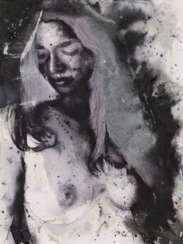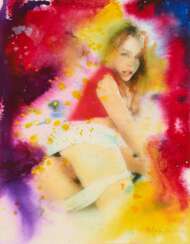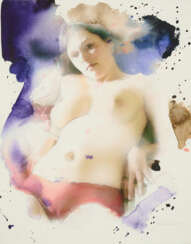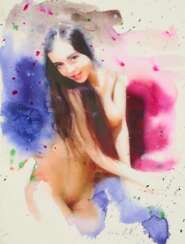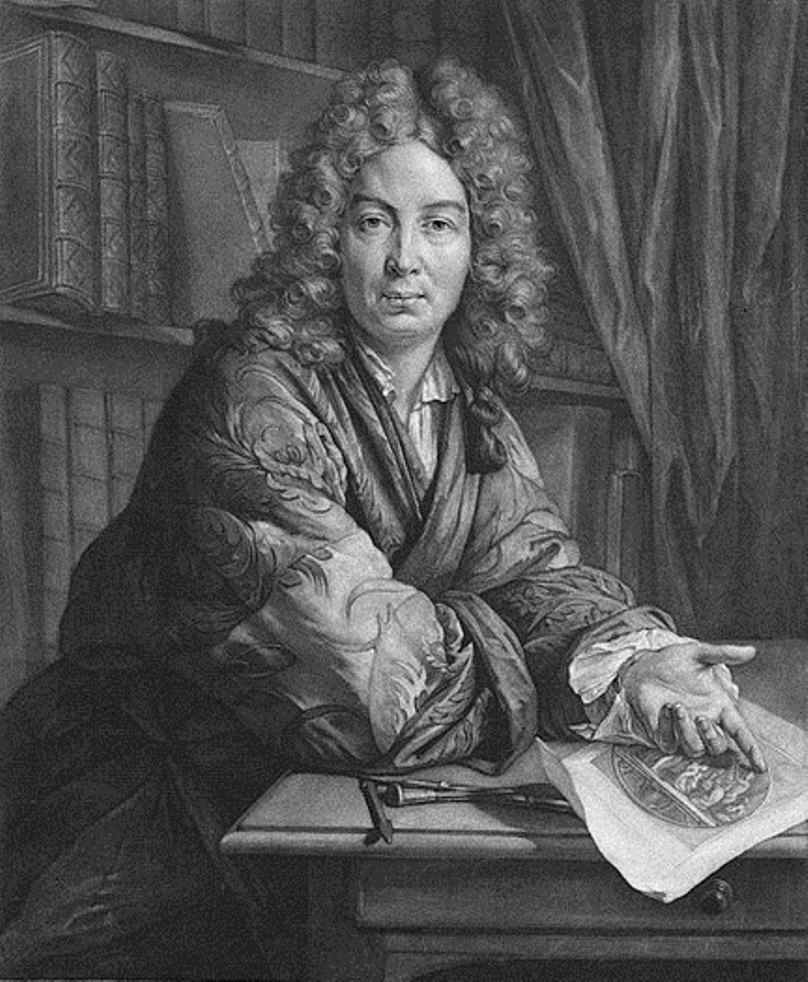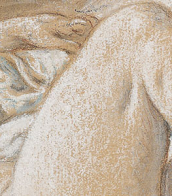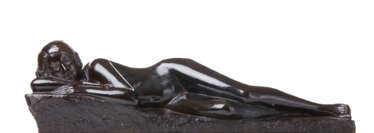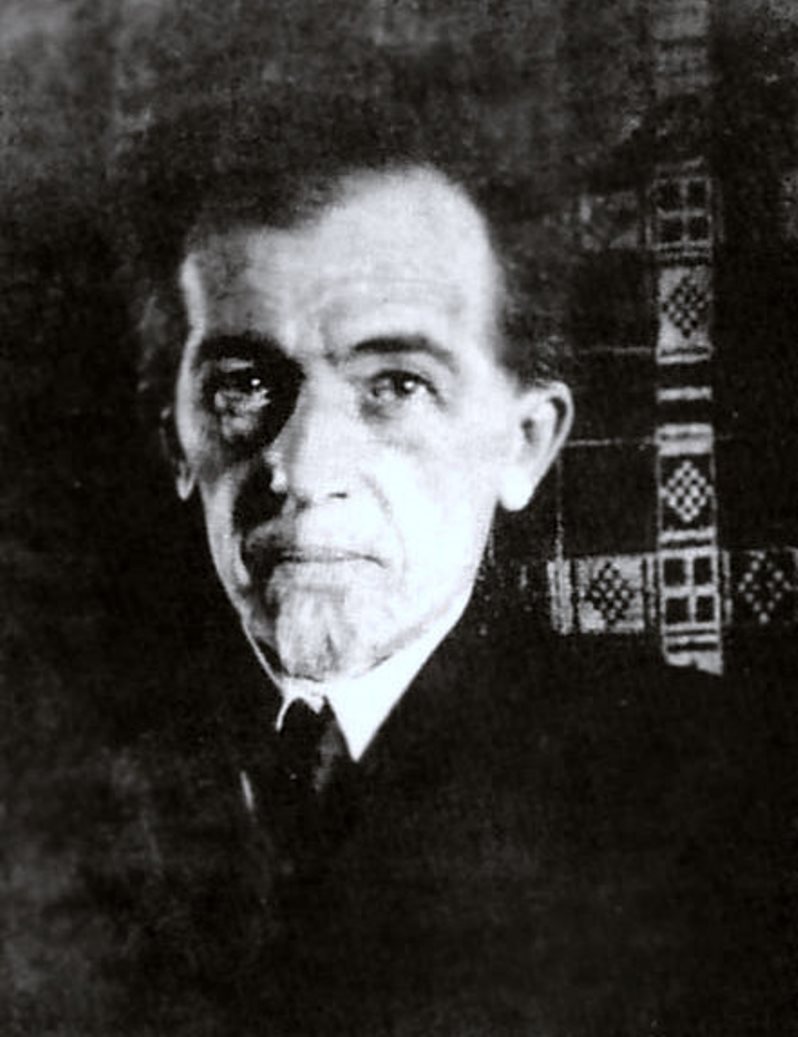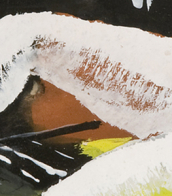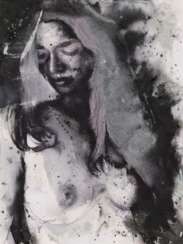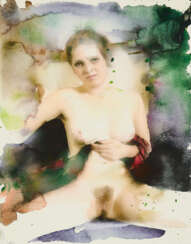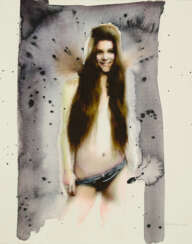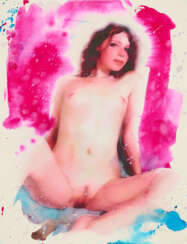nude art
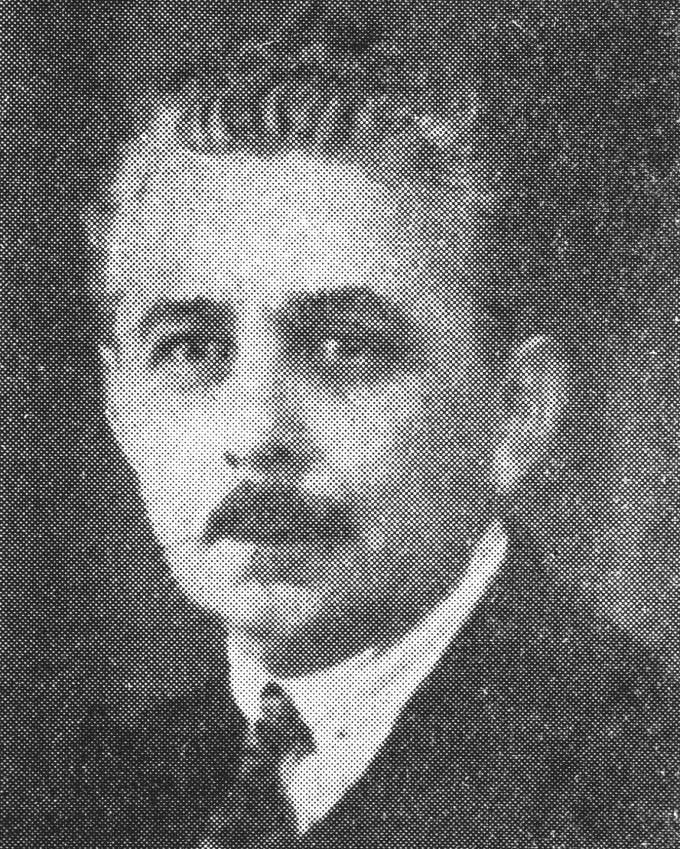
Raphael Schwartz was a multifaceted Russian artist with Ukrainian origins, celebrated for his work as a painter, printmaker, and sculptor. Born on October 1, 1874, in Kiev, he later settled in Paris in 1892 after marrying a French aristocrat. His presence in the artistic hub of Paris, particularly at the Villa des Ternes, allowed him to nurture a vibrant social life, described by his friend, sculptor Jacques Loutchansky, as active and filled with humor.
Schwartz's artistic versatility is showcased in works like the 'Seated female Nude', a bronze sculpture noted for its brown patina and fine craftsmanship. This piece is signed 'Raphael Schwartz' and carries the foundry mark 'CIRE C. VALSUANI PERDUE', indicating the quality and authenticity valued by collectors and auctioneers.
Educated at Académie Julian, Schwartz's contributions to the art world were acknowledged when he was awarded the Legion of Honour. His legacy as an artist is grounded in the Russian and French traditions, despite the tragic end to his life by suicide in Pau, France, on August 3, 1942.
For those interested in the rich tapestry of art history and the works of Raphael Schwartz, signing up for updates is essential to stay informed about this distinguished artist's enduring influence.
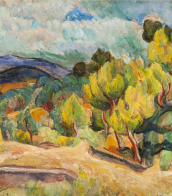
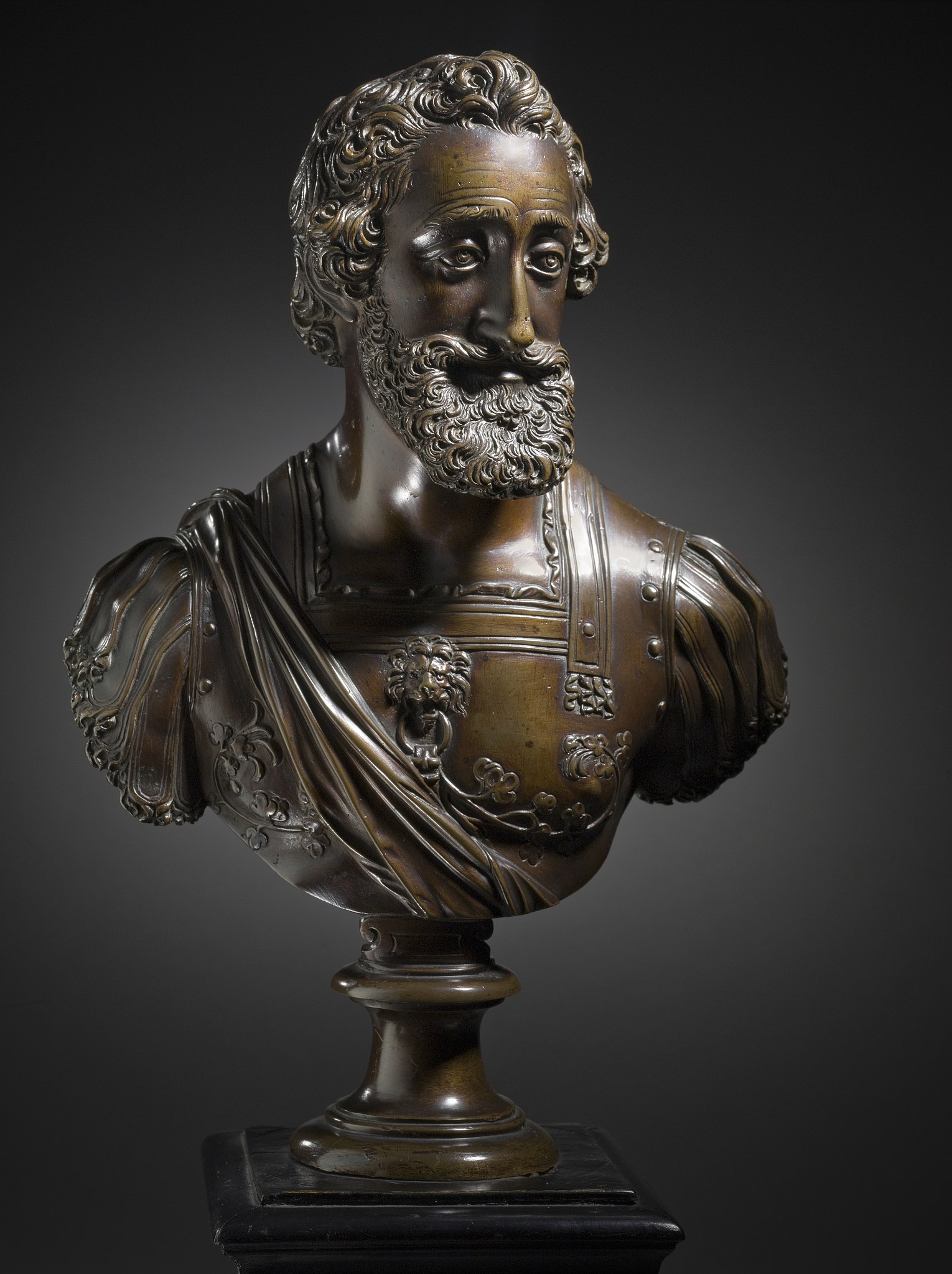
Barthelemy Prieur was a French sculptor.
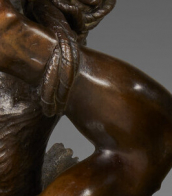
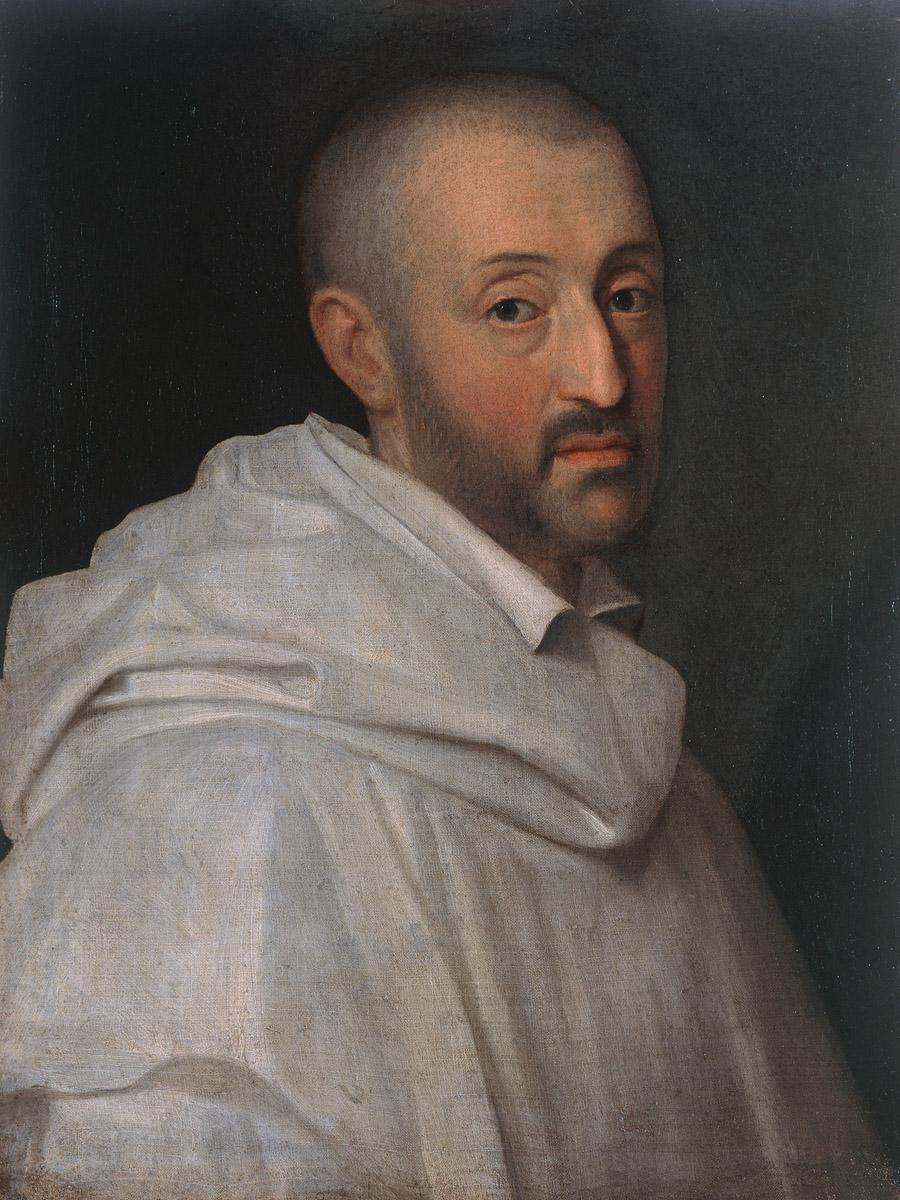
Bartolomeo Cesi was an Italian painter and draftsman of the Bolognese School. He made easel paintings as well as frescoes. He is known mainly for his religious paintings but he also painted portraits and mythological scenes.
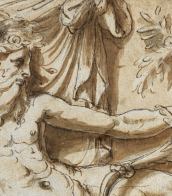
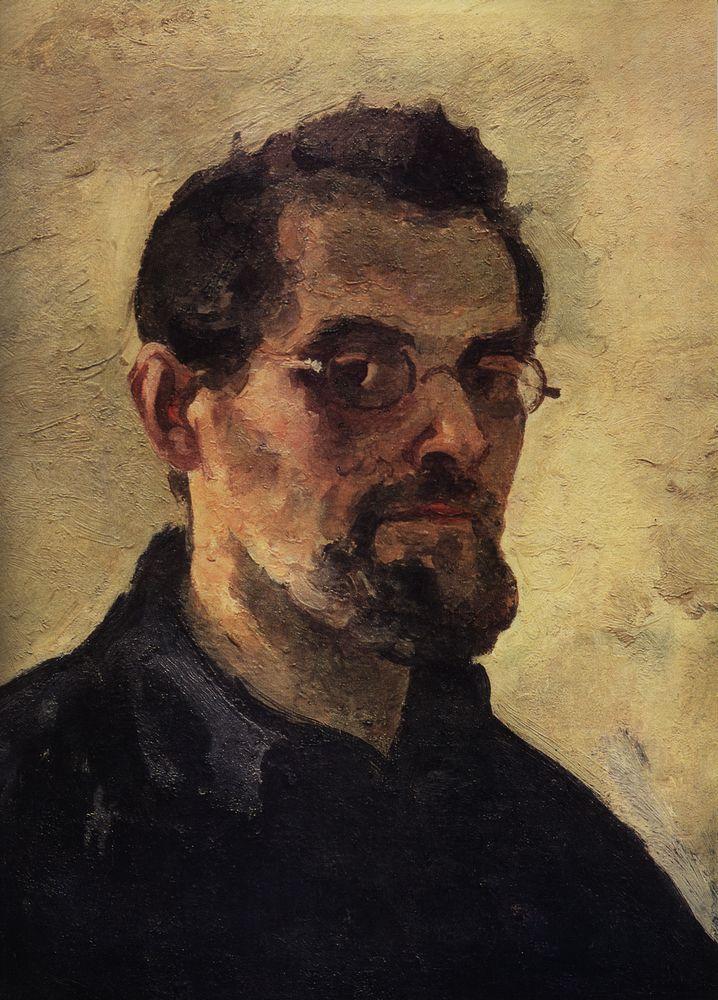
Alexander Vasilyevich Kuprin (Russian: Алекса́ндр Васи́льевич Купри́н) was a Russian painter and educator, renowned for his contribution to the "Jack of Diamonds" group and his profound influence on Soviet art. Born in Borisoglebsk, Voronezh region, in 1880, Kuprin's early life was steeped in the creative atmosphere provided by his family, moving to Voronezh in 1893. His educational journey through various art schools culminated at the Moscow School of Painting, Sculpture, and Architecture, where he was under the tutelage of Abram Arkhipov and Konstantin Korovin.
Kuprin's art evolved significantly over time. Initially inspired by French painting and Cézanne, his early works were marked by Cubist influences, characterized by a geometric simplification of forms. As one of the founding members of the Knave of Diamonds, he was at the forefront of avant-garde movements in Russia. However, his style underwent a transformation towards realism in the 1920s, influenced by his experiences in Nizhny Novgorod and later travels to Crimea. This period marked a departure from avant-garde to a focus on industrial landscapes and the natural beauty of the Crimean peninsula.
His significant works, often reflecting his fascination with the interplay of light, shadow, and form, are held in high esteem, with notable pieces like "Still Life With Blue Tray" and "The Beasal’skaia Valley" housed in the Tret’iakov Gallery. Kuprin's commitment to education saw him teaching at various institutions, including the Moscow textile Institute and the Moscow Higher Art and Industrial School, influencing generations of artists.
Alexander Vasilyevich Kuprin's legacy is not only in the beauty he captured on canvas but also in the minds he shaped through his teaching. His works, a testament to the evolution of Russian art through turbulent times, continue to inspire and captivate.
Collectors and experts in art and antiques can find a deeper appreciation for Kuprin's work by exploring his contributions to the Russian avant-garde and his influence on Soviet art aesthetics. For those interested in staying updated on sales and auction events related to Alexander Vasilyevich Kuprin, signing up for updates is highly recommended. This subscription will provide exclusive insights into the availability of his works, ensuring enthusiasts don't miss the opportunity to own a piece of Russian art history.
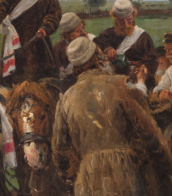

Dmitry Mikhailovich Krasnopevtsev (Russian: Дмитрий Михайлович Краснопевцев) was a Soviet and Russian artist of the second half of the twentieth century. He is known as a painter and graphic artist, a representative of "unofficial art" and the so-called Second Russian avant-garde.
Dmitry Krasnopevtsev chose as his main genre "metaphysical still lifes" approaching surrealism, often depicting ceramics, dried plants and shells in melancholy colors. These works developed Baroque motifs of the frailty and unreality of the world. Although for a long time his works were little exhibited in his homeland, they found admirers in other countries such as Austria, Germany, France, Japan, and the United States.

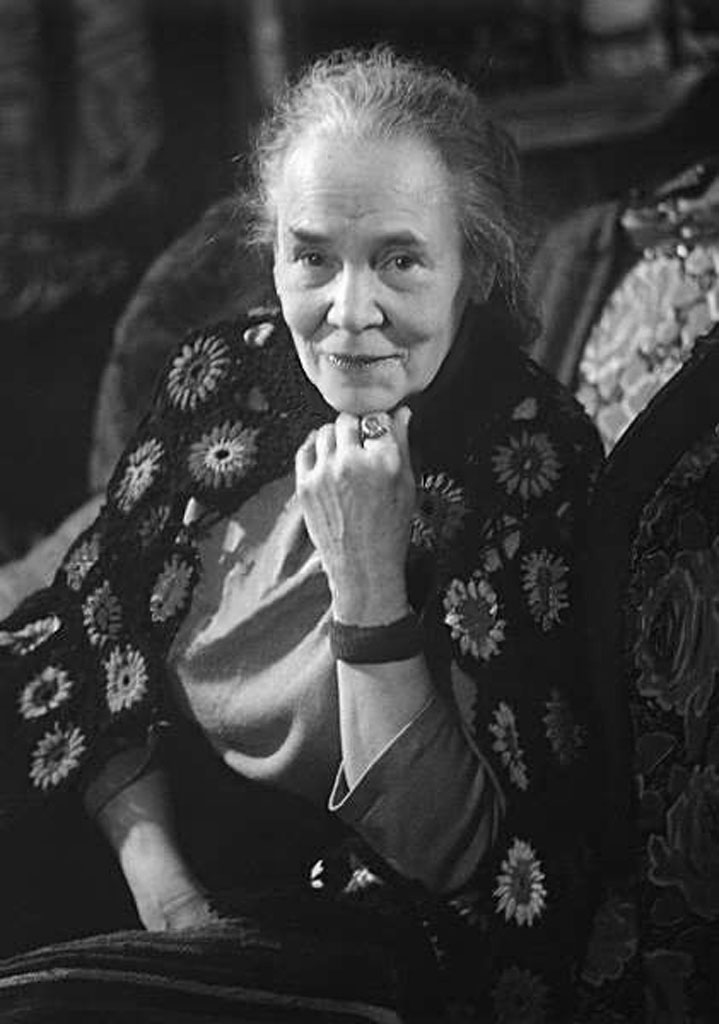
Tatyana Alekseevna Mavrina (Russian: Татьяна Алексеевна Маврина) was a Soviet and Russian artist of the twentieth century. She is known as a painter, graphic artist and illustrator of children's books. Mavrina worked in the genres of portrait, landscape and still life in a style close to primitivism. She boldly experimented with watercolor, gouache and easel graphics.
Tatyana Mavrina is also known as a researcher of folklore. She traveled extensively to distant cities, got acquainted with folk art, made sketches of old architecture. By the drawings of Mavrina later researchers studied the life of the Russian provinces.
For her contribution to the illustration of children's books Mavrina was awarded the State Prize of the USSR, as well as the international literary prize named after HK Andersen. Mavrina's works, as well as her collection of handicrafts are kept in the Russian Museum and the Pushkin Museum.

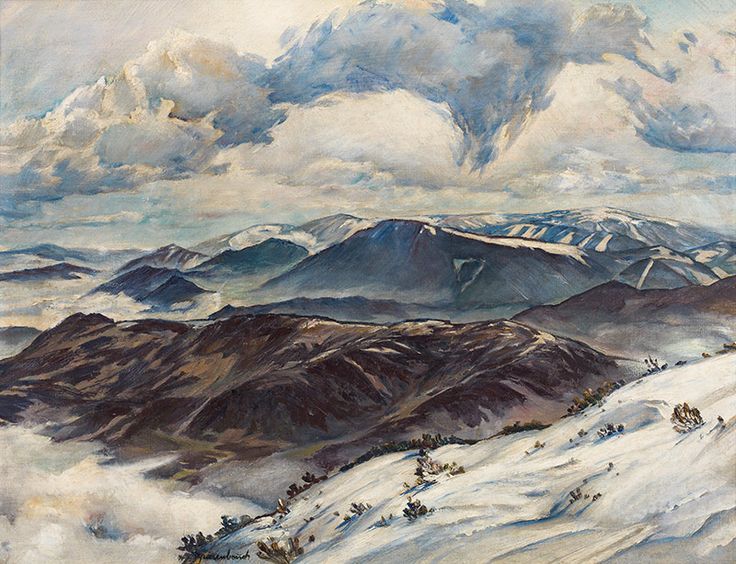
Arthur Brusenbauch was an Austrian painter. Arthur Brusenbauch learned from Johann Kautsky and then worked as a stage decorator himself. He studied in Vienna at the Staatsgewerbeschule and the Academy of Fine Arts, interrupted by military service and imprisonment. In 1920 he became a member of the Vienna Secession, and in 1939 he moved to the Künstlerhaus. In 1928 he had represented Austria in the art competitions of the 1928 Olympic Games. From 1937 to 1941 he participated in all major German art exhibitions in Munich with seven oil paintings. There, in 1939, Hitler acquired the picture of Melk an der Donau in festive decorations. Brusenbauch, who is attributed to late impressionism, dealt with fresco painting and graphics.
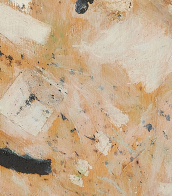
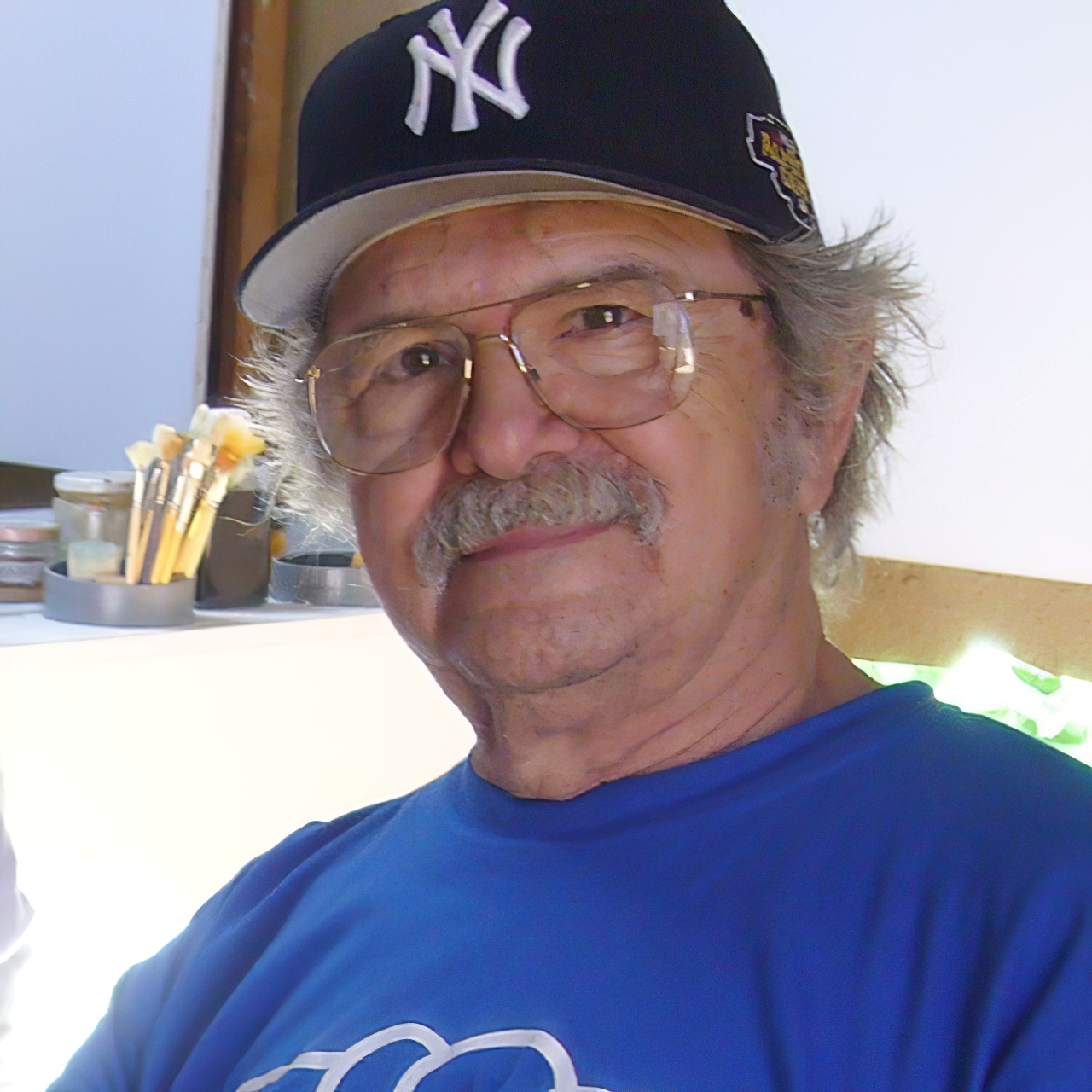
Melvin John Ramos was an American figurative painter, specializing most often in paintings of female nudes, whose work incorporates elements of realist and abstract art.
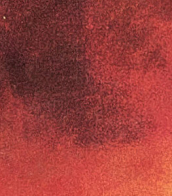
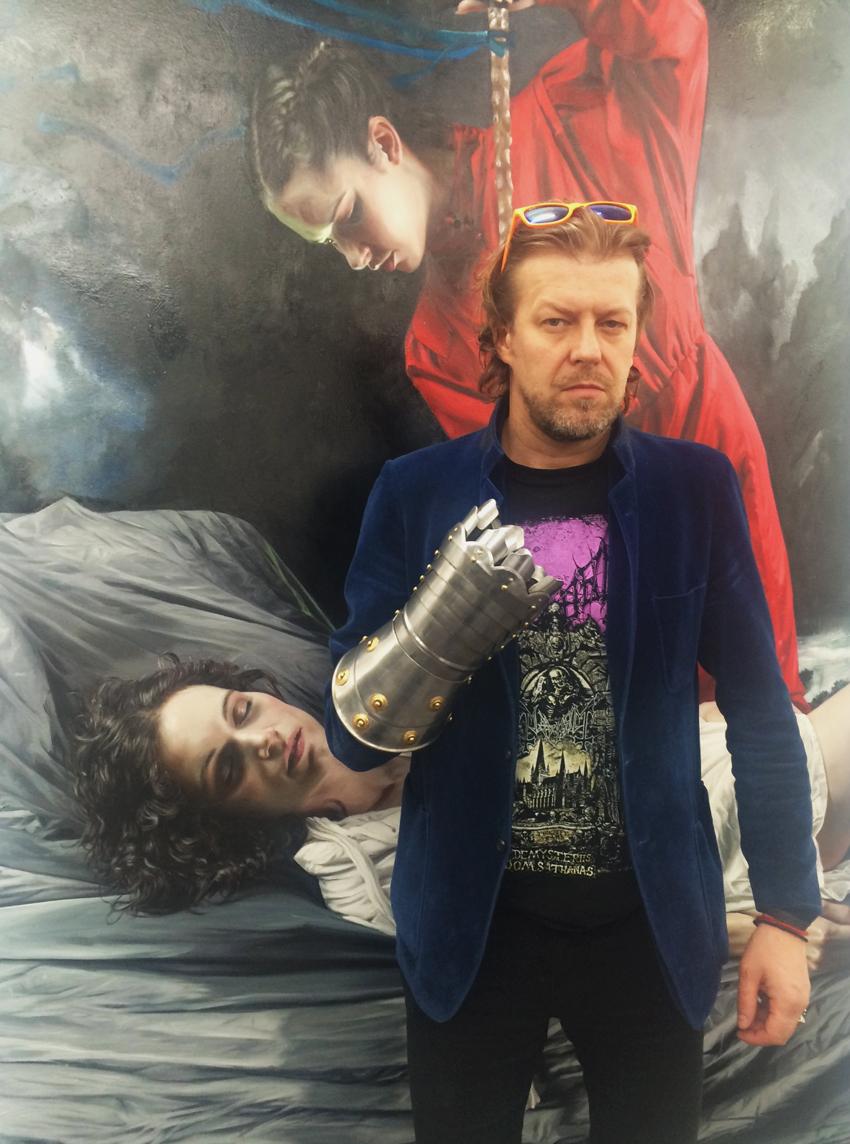
Martin Eder is a German artist.
From 1986 until 1992, he studied at the Augsburg University of Applied Sciences, and from 1993 until 1995 continued his studies at the Academy of Fine Arts Nuremberg, attending the University of Kassel in 1995 and 1996. From 1996 until 1999 he studied under Eberhard Bosslet at the Dresden Academy of Fine Arts and was a master student under Professor Bosslet from 1991 until 2001. Eder lives and works in Berlin. He plays in his own experimental rock band under the name Richard Ruin et Les Demoniaques.
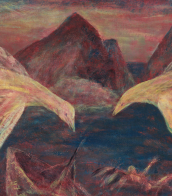
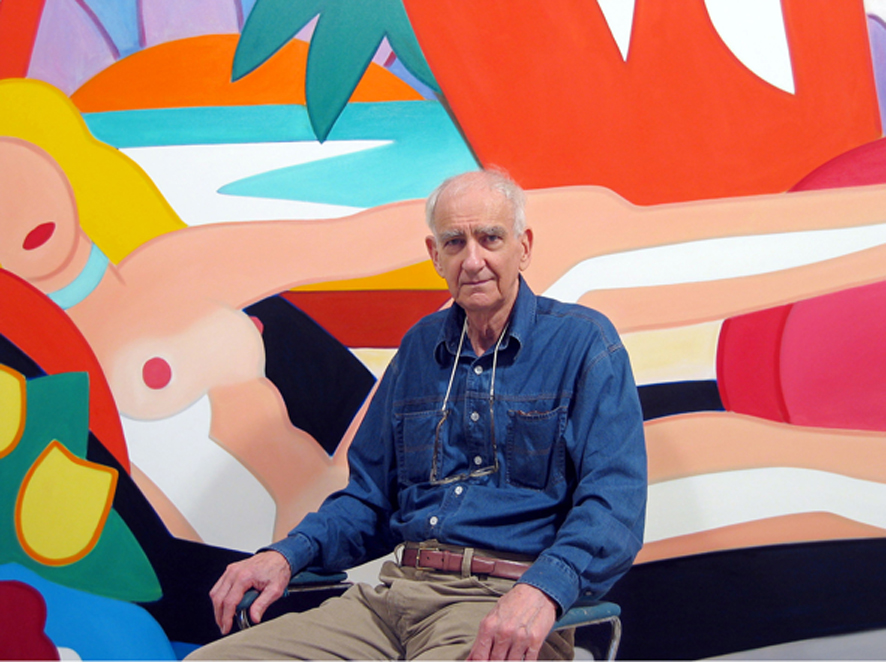
Tom Wesselmann was an American artist associated with the Pop Art movement who worked in painting, collage and sculpture.
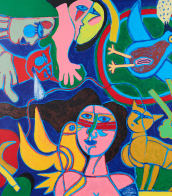
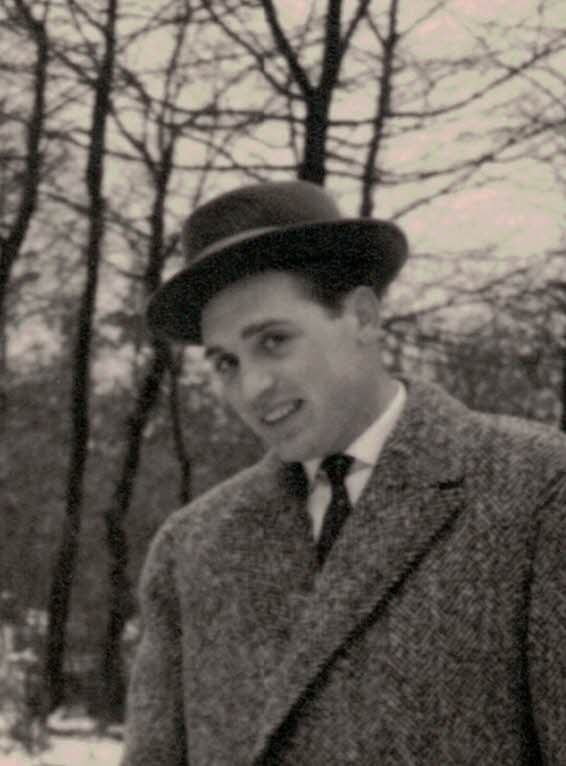
Adolf Hartmann was a German painter. On October 29, 1918, at the age of 18, he began his studies at the Academy of Fine Arts in Munich with Angelo Jank and later continued at the Academy of Fine Arts in Berlin with Gustav Boese. From 1924 Hartmann worked as a freelance artist. His exhibition activity began as early as 1919, when he took part in an exhibition in the Glass Palace in Munich, where he has exhibited regularly ever since. Adolf Hartmann was a professor at the Academy of Fine Arts in Berlin from 1948 to 1962. Hartmann was a member of numerous artist associations, e.g. of the New Group, of which he was also President for a time. Adolf Hartmann was a member of the Munich Secession and the jury-free as well as an honorary member of the Rhenish Secession.
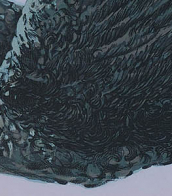

Adolf Hartmann was a German painter. On October 29, 1918, at the age of 18, he began his studies at the Academy of Fine Arts in Munich with Angelo Jank and later continued at the Academy of Fine Arts in Berlin with Gustav Boese. From 1924 Hartmann worked as a freelance artist. His exhibition activity began as early as 1919, when he took part in an exhibition in the Glass Palace in Munich, where he has exhibited regularly ever since. Adolf Hartmann was a professor at the Academy of Fine Arts in Berlin from 1948 to 1962. Hartmann was a member of numerous artist associations, e.g. of the New Group, of which he was also President for a time. Adolf Hartmann was a member of the Munich Secession and the jury-free as well as an honorary member of the Rhenish Secession.


Martin Eder is a German artist.
From 1986 until 1992, he studied at the Augsburg University of Applied Sciences, and from 1993 until 1995 continued his studies at the Academy of Fine Arts Nuremberg, attending the University of Kassel in 1995 and 1996. From 1996 until 1999 he studied under Eberhard Bosslet at the Dresden Academy of Fine Arts and was a master student under Professor Bosslet from 1991 until 2001. Eder lives and works in Berlin. He plays in his own experimental rock band under the name Richard Ruin et Les Demoniaques.


Martin Eder is a German artist.
From 1986 until 1992, he studied at the Augsburg University of Applied Sciences, and from 1993 until 1995 continued his studies at the Academy of Fine Arts Nuremberg, attending the University of Kassel in 1995 and 1996. From 1996 until 1999 he studied under Eberhard Bosslet at the Dresden Academy of Fine Arts and was a master student under Professor Bosslet from 1991 until 2001. Eder lives and works in Berlin. He plays in his own experimental rock band under the name Richard Ruin et Les Demoniaques.


Martin Eder is a German artist.
From 1986 until 1992, he studied at the Augsburg University of Applied Sciences, and from 1993 until 1995 continued his studies at the Academy of Fine Arts Nuremberg, attending the University of Kassel in 1995 and 1996. From 1996 until 1999 he studied under Eberhard Bosslet at the Dresden Academy of Fine Arts and was a master student under Professor Bosslet from 1991 until 2001. Eder lives and works in Berlin. He plays in his own experimental rock band under the name Richard Ruin et Les Demoniaques.
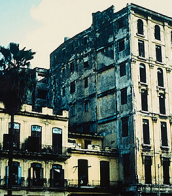

Martin Eder is a German artist.
From 1986 until 1992, he studied at the Augsburg University of Applied Sciences, and from 1993 until 1995 continued his studies at the Academy of Fine Arts Nuremberg, attending the University of Kassel in 1995 and 1996. From 1996 until 1999 he studied under Eberhard Bosslet at the Dresden Academy of Fine Arts and was a master student under Professor Bosslet from 1991 until 2001. Eder lives and works in Berlin. He plays in his own experimental rock band under the name Richard Ruin et Les Demoniaques.


Martin Eder is a German artist.
From 1986 until 1992, he studied at the Augsburg University of Applied Sciences, and from 1993 until 1995 continued his studies at the Academy of Fine Arts Nuremberg, attending the University of Kassel in 1995 and 1996. From 1996 until 1999 he studied under Eberhard Bosslet at the Dresden Academy of Fine Arts and was a master student under Professor Bosslet from 1991 until 2001. Eder lives and works in Berlin. He plays in his own experimental rock band under the name Richard Ruin et Les Demoniaques.


Martin Eder is a German artist.
From 1986 until 1992, he studied at the Augsburg University of Applied Sciences, and from 1993 until 1995 continued his studies at the Academy of Fine Arts Nuremberg, attending the University of Kassel in 1995 and 1996. From 1996 until 1999 he studied under Eberhard Bosslet at the Dresden Academy of Fine Arts and was a master student under Professor Bosslet from 1991 until 2001. Eder lives and works in Berlin. He plays in his own experimental rock band under the name Richard Ruin et Les Demoniaques.
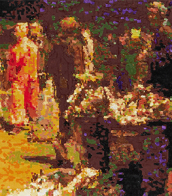

Martin Eder is a German artist.
From 1986 until 1992, he studied at the Augsburg University of Applied Sciences, and from 1993 until 1995 continued his studies at the Academy of Fine Arts Nuremberg, attending the University of Kassel in 1995 and 1996. From 1996 until 1999 he studied under Eberhard Bosslet at the Dresden Academy of Fine Arts and was a master student under Professor Bosslet from 1991 until 2001. Eder lives and works in Berlin. He plays in his own experimental rock band under the name Richard Ruin et Les Demoniaques.


Martin Eder is a German artist.
From 1986 until 1992, he studied at the Augsburg University of Applied Sciences, and from 1993 until 1995 continued his studies at the Academy of Fine Arts Nuremberg, attending the University of Kassel in 1995 and 1996. From 1996 until 1999 he studied under Eberhard Bosslet at the Dresden Academy of Fine Arts and was a master student under Professor Bosslet from 1991 until 2001. Eder lives and works in Berlin. He plays in his own experimental rock band under the name Richard Ruin et Les Demoniaques.


Martin Eder is a German artist.
From 1986 until 1992, he studied at the Augsburg University of Applied Sciences, and from 1993 until 1995 continued his studies at the Academy of Fine Arts Nuremberg, attending the University of Kassel in 1995 and 1996. From 1996 until 1999 he studied under Eberhard Bosslet at the Dresden Academy of Fine Arts and was a master student under Professor Bosslet from 1991 until 2001. Eder lives and works in Berlin. He plays in his own experimental rock band under the name Richard Ruin et Les Demoniaques.

